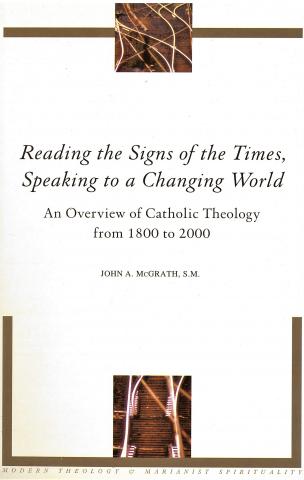by John A. McGrath, SM
205 pgs., $12.00
Father John A. McGrath has surveyed the main elements of Catholic theology of the nineteenth and twentieth centuries in this book. He concentrates on currents in Western Europe, especially France, Germany, and Italy, to show connections with Marianist life in this period. He begins with the stream of French traditionalism after the French Revolution and then follows the liberal line of thought of Felicité de Lamennais. He treats the Tübingen School and the developments in English Catholicism, especially as seen in the work of Cardinal Newman.
In several chapters Father McGrath traces neoscholastic and thomistic developments so important for the first half of the twentieth century. His treatment of modernism and those persons involved is particularly vivid and enlightening. He manages to touch on the various currents in Catholic theology before the Second Vatican Council, devoting a chapter to the rise of Catholic social teaching from Pope Leo XIII to the present.
Finally, he devotes two chapters to the theology of the Second Vatican Council itself and to the recent developments in the post-conciliar era.
An epilogue suggests possible questions for future study by Marianists to link the theological movements of this period with Marianist life from its beginnings.

